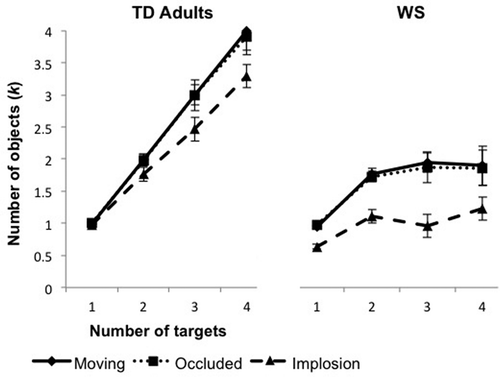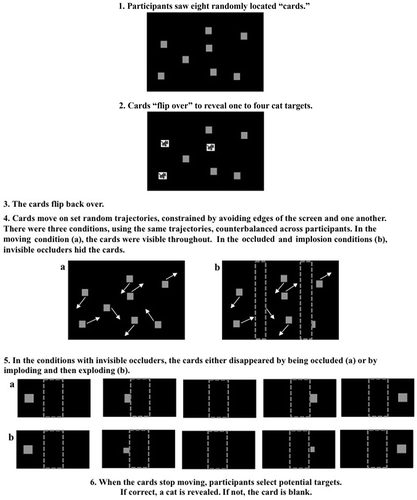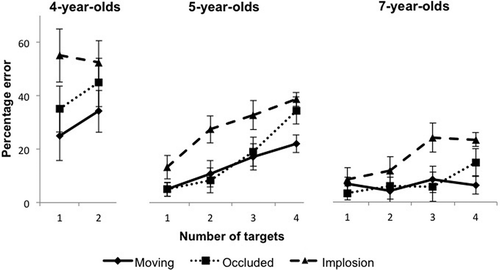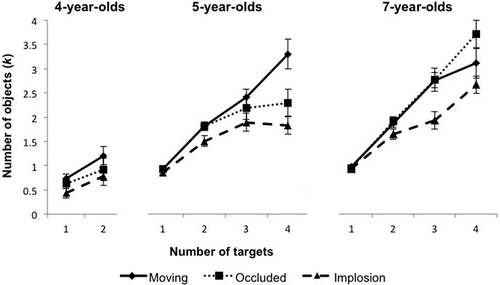Figures & data
Figure 2 Percentage of error as a function of number of targets in each of the three conditions (moving, occluded, and implosion), shown for both the typically developing (TD) adult and Williams syndrome (WS) groups.
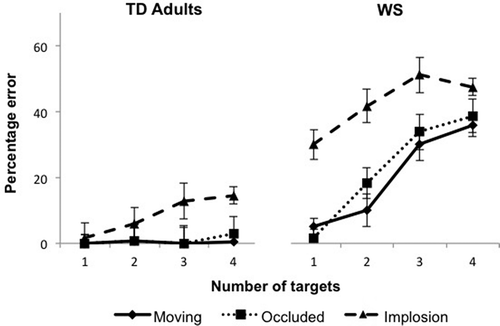
Figure 3 Mean number of objects tracked (k) by the typically developing (TD) adult and Williams syndrome (WS) groups in Experiment 1. Error bars represent the standard error of the mean.
